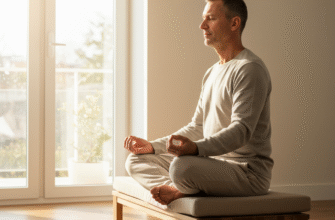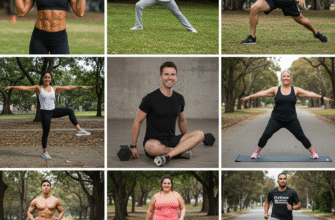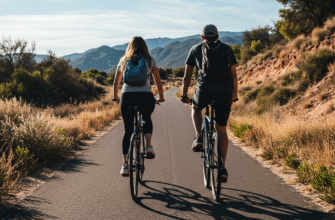Let’s be honest, the word “exercise” often carries some heavy baggage. It can conjure images of grueling gym sessions, repetitive movements endured rather than enjoyed, and a constant feeling of falling short. We’re told we *should* do it, that it’s *good* for us, yet for many, the reality is a cycle of starting, stopping, and feeling guilty. But what if we could ditch the drudgery and find genuine, lasting happiness in moving our bodies? What if physical activity became less about obligation and more about exploration, fun, and feeling alive?
Shifting Your Perspective: From Chore to Choice
The first, crucial step towards lifelong activity is a mental one. It involves reframing how we think about moving. Instead of viewing it as a punishment for what we ate or a box to tick off a to-do list, consider it an opportunity. An opportunity to connect with your body, to relieve stress, to boost your mood, to explore your capabilities, and yes, to have fun. This isn’t about achieving a specific physique or hitting arbitrary performance goals (though those might happen as side effects). It’s about discovering activities that make you feel good, both during and after.
Think back to childhood. Remember running around just for the sheer joy of it? Climbing trees, playing tag, dancing without inhibition? That innate desire to move often gets buried under adult responsibilities and societal pressures about what “proper” exercise looks like. Reconnecting with that playful spirit is key. Ask yourself: what ways of moving actually sound appealing? Forget the “shoulds” for a moment. What sparks a flicker of interest or curiosity?
The Buffet of Movement: Finding Your Flavour
The world of physical activity is incredibly diverse, far beyond the confines of treadmills and weight racks. Finding lifelong joy often means stepping outside the conventional fitness box and exploring this vast buffet. The goal is to find something that resonates with you, something you look forward to rather than dread.
Exploring Outdoors
Nature itself is a fantastic motivator. Consider:
- Walking or Hiking: From gentle strolls in a local park to challenging mountain trails, walking is accessible and profoundly beneficial. Vary your routes, explore new areas, listen to music or podcasts, or simply soak in the sights and sounds.
- Cycling: Whether it’s a leisurely ride along a river path or more adventurous mountain biking, cycling offers freedom and a great way to cover ground.
- Gardening: Don’t underestimate the physical demands and mental rewards of digging, planting, weeding, and harvesting. It connects you to the earth and provides tangible results.
- Water Activities: Swimming, kayaking, paddleboarding, or even just playing in the waves offers unique resistance and a sense of calm or exhilaration.
Embracing Play and Rhythm
Who said activity can’t be playful?
- Dancing: Put on your favourite music and dance around your living room! Try Zumba, salsa, ballroom, hip-hop classes, or folk dancing. It’s expressive, social, and a fantastic mood booster.
- Team or Individual Sports: Rekindle a love for basketball, tennis, volleyball, soccer, frisbee, or try something new like pickleball or badminton. The camaraderie and challenge can be highly motivating.
- Active Games: Think beyond organised sports. Playing tag with kids, joining a casual frisbee game in the park, or even active video games can get you moving.
Integrating Movement into Daily Life
Sometimes, the most sustainable activity isn’t a scheduled workout, but small bursts integrated throughout your day:
- Active Commuting: Walk or cycle part or all of the way to work or for errands.
- Taking the Stairs: A classic for a reason!
- “Movement Snacks”: Short bursts of activity like stretching, walking around during phone calls, doing squats while waiting for the kettle to boil, or having a 5-minute dance break.
- Active Hobbies: Consider hobbies that inherently involve movement, like photography (walking to find shots), birdwatching, or certain types of volunteering.
The key is experimentation. Try different things. Some you’ll love, some you won’t, and that’s perfectly fine. Don’t feel pressured to stick with something just because it’s popular or because someone else enjoys it. Your journey is unique.
Building Sustainable Habits: Consistency Over Intensity
Finding activities you enjoy is half the battle; the other half is weaving them into the fabric of your life consistently. This doesn’t mean pushing yourself to the limit every day. In fact, aiming for sustainable consistency is often more effective long-term than sporadic, intense bursts followed by burnout.
Start small. If you’re new to regular activity, aiming for a 10-15 minute walk most days is far more achievable and less intimidating than committing to an hour-long gym session five times a week. You can gradually increase duration or intensity as you feel comfortable and as the habit becomes ingrained. Link your activity to existing routines – perhaps a walk right after dinner, stretching while your morning coffee brews, or cycling to the grocery store on Saturdays. This “habit stacking” makes it easier to remember and integrate.
Remember that consistency trumps intensity for long-term adherence. Small, regular bouts of enjoyable movement build momentum and positive associations. It’s better to do a short, fun activity regularly than to force yourself into long, disliked workouts sporadically. This approach fosters a sustainable relationship with physical activity.
Listen to your body. Some days you’ll have more energy than others. On low-energy days, opt for gentler movement like stretching or a slow walk instead of skipping activity altogether. Honouring your body’s signals prevents injury and burnout, reinforcing the idea that movement is adaptable and supportive, not punitive.
The Power of Connection: Moving Together
While solo activity has its place, incorporating a social element can significantly boost enjoyment and adherence. Sharing experiences, having mutual accountability, and simply enjoying the company of others can transform movement from a solitary task into a fun social event.
- Find a Buddy: Arrange regular walks, runs, bike rides, or gym sessions with a friend, family member, or colleague. You’re less likely to cancel if someone else is counting on you.
- Join Group Classes: Fitness classes (dance, yoga, spin, aerobics) offer structure, guidance, and a shared energy that can be highly motivating. Explore community centers or local studios.
- Team Up: Joining a casual sports league or recreational team provides built-in activity and social interaction.
- Family Fun: Make activity a family affair. Go for bike rides together, play games in the park, go hiking, or have family dance parties.
Sharing the journey makes challenges feel smaller and successes sweeter. Laughter, conversation, and shared effort create positive memories associated with being active.
Focusing on the Feeling: Internal Rewards
Too often, the focus on physical activity is purely external: weight loss, miles run, weights lifted. While tracking progress can be motivating for some, relying solely on these metrics can lead to frustration if results aren’t immediate or linear. A more sustainable approach is to tune into the internal rewards – how movement makes you feel.
Pay attention to the non-scale victories: * Increased energy levels throughout the day. * Improved mood and reduced feelings of stress or anxiety. * Better sleep quality. * A sense of accomplishment and empowerment. * Feeling stronger and more capable in daily tasks. * Greater mental clarity and focus. * The simple pleasure of being outdoors or mastering a new skill.
When you start associating activity with feeling good mentally and emotionally, the motivation shifts from external pressure to internal desire. It becomes something you *want* to do because you know it enhances your overall well-being and adds joy to your life, regardless of what the scale or stopwatch says.
Navigating Roadblocks: Life Happens
Even with the best intentions and most enjoyable activities, life can get in the way. Time constraints, bad weather, low motivation, or unexpected events can disrupt routines. The key is not to see these as failures, but as temporary pauses. Flexibility is crucial for a lifelong habit.
Common Hurdles and Strategies:
- Lack of Time: Schedule activity like any important appointment. Even short “movement snacks” count. Combine activity with other tasks (walking meetings, active commuting).
- Low Motivation: Remind yourself *why* you enjoy moving (focus on the feeling!). Have a backup plan for low-energy days (gentle stretching, short walk). Put on motivating music. Call your activity buddy.
- Bad Weather: Have indoor alternatives ready – dancing, online workout videos, stair climbing, active housework, visiting an indoor climbing wall or pool.
- Boredom: Variety is key! Don’t be afraid to switch things up, try new activities, or revisit old favourites. Explore new routes, new music, or new class types.
It’s vital to avoid the “all-or-nothing” mindset. Missing a day, or even a week, doesn’t erase your progress or mean you’ve failed. Simply acknowledge the interruption and gently return to your enjoyable movement routine as soon as you can. Lifelong habits are built on resilience and self-compassion, not perfection.
An Evolving Journey: Activity for Life
Finding lifelong joy in physical activity isn’t about finding one perfect routine and sticking to it rigidly forever. Our bodies, interests, schedules, and environments change over time. The activities you loved in your twenties might not be suitable or enjoyable in your fifties or seventies. The key is adaptability and a willingness to continuously explore and adjust.
View your relationship with movement as an ongoing journey of discovery. Be open to trying new things as your life circumstances evolve. Perhaps an injury requires shifting from high-impact sports to swimming or yoga. Maybe retirement opens up more time for hiking or joining a daytime dance class. The goal is to maintain a foundation of enjoyable movement, whatever form it takes at different stages of life.
Embrace the process. Celebrate the small wins. Focus on the fun, the feeling, and the connection. By shifting your mindset from obligation to opportunity, exploring the vast world of enjoyable movement, building sustainable habits, and focusing on how activity makes you feel, you can unlock the door to lifelong physical activity – not as a chore, but as a source of enduring joy and vitality. Start exploring today, find what makes you feel good, and get ready to move through life with a smile.








